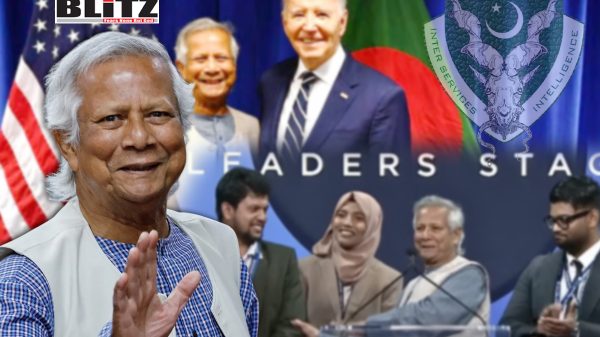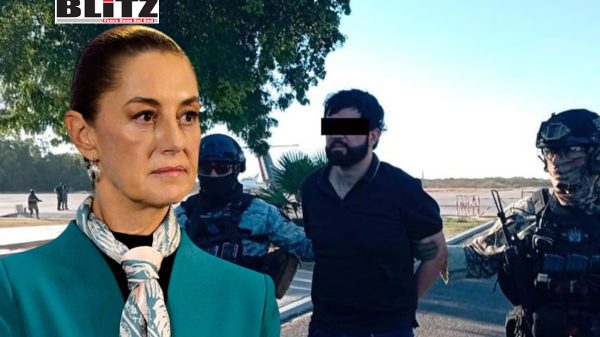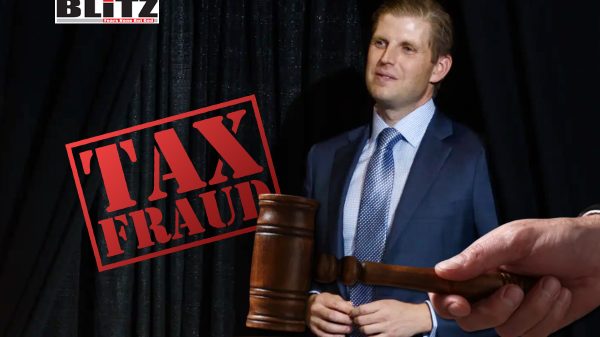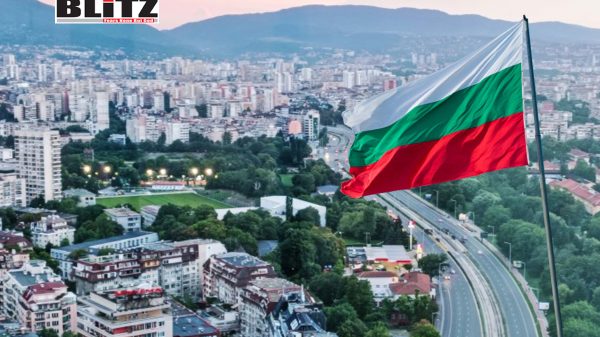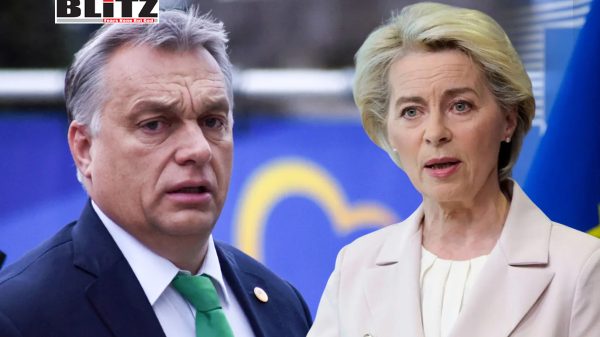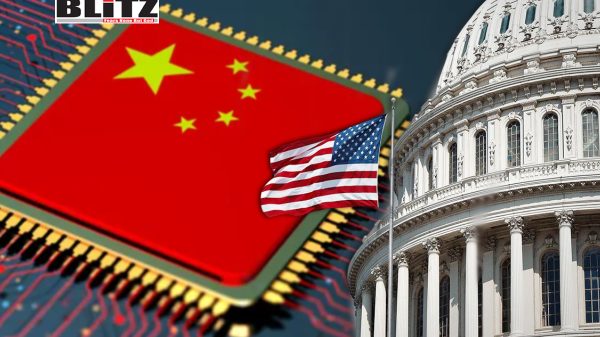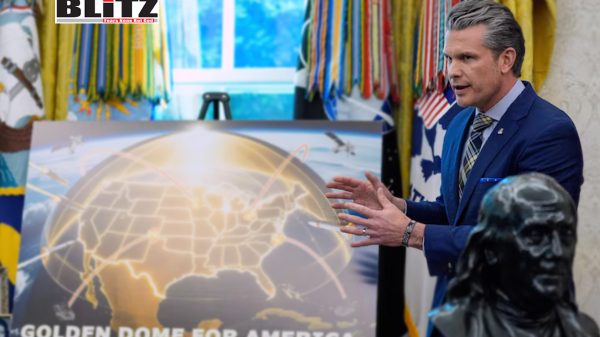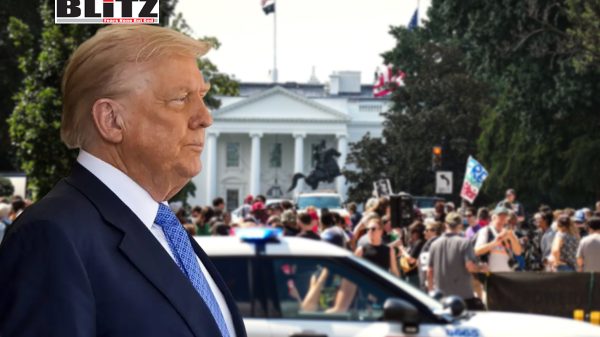Serbia plunged into political turmoil as nationwide protests turn violent
- Update Time : Friday, August 15, 2025
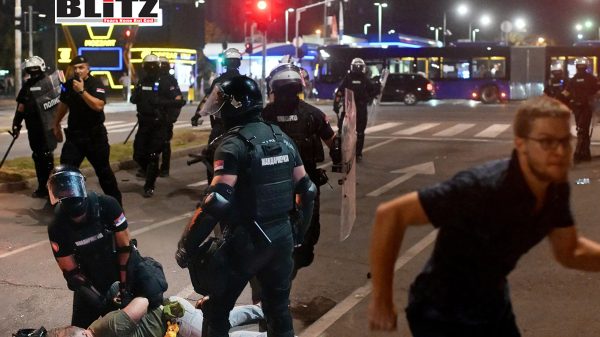
Serbia is facing its most turbulent political crisis in years as nationwide protests demanding government accountability have escalated into violent street confrontations. The unrest, sparked by the fatal collapse of a renovated railway station canopy last November, has now grown into a broader political movement challenging President Aleksandar Vučić’s long-standing rule.
On August 13, the northern city of Novi Sad became the epicenter of the latest clashes, as supporters of the ruling Serbian Progressive Party (SNS) and anti-government demonstrators engaged in a fierce standoff. According to officials, at least 64 SNS supporters and 16 police officers were injured, with numerous others treated for minor injuries on the scene.
The violence erupted after hundreds of protesters gathered outside the SNS offices, demanding early parliamentary elections and justice for the victims of the Novi Sad railway station tragedy. The incident, which killed 16 people when the canopy collapsed just months after the station’s renovation, has become a rallying point for accusations of government corruption, negligence, and cover-ups.
The railway station disaster in November sent shockwaves through Serbia. Images of the mangled concrete structure and testimonies from grieving families ignited public outrage. Many citizens saw the collapse not as an isolated accident but as the symptom of systemic problems – cronyism in public contracts, lack of safety oversight, and the government’s alleged prioritization of political loyalty over professional competence.
Initially, the protests were driven largely by students and local activists. But over the past nine months, the movement has grown to include broader segments of society – from labor unions to opposition political parties – united by a demand for change and early elections to end Vučić’s 13-year grip on power.
Tensions in Novi Sad reached a breaking point when SNS supporters reportedly gathered near the party’s offices to counter the demonstrators. Protesters claim that ruling party loyalists hurled flares and firecrackers at them from the direction of the SNS building. In retaliation, some protesters threw objects and smashed windows.
President Vučić, in a televised statement, described the protesters as “thugs” who “approached from the rear with sticks and cannon shots.” He praised SNS activists for not retreating and accused the demonstrators of attempting to “block and beat” government supporters.
He also alleged that the unrest was influenced by unnamed foreign powers seeking to destabilize Serbia. “Tonight, we have averted a catastrophic scenario planned by someone from abroad,” Vučić said, vowing that those who violated the law would be apprehended.
Opposition groups, including the Move-Change movement, have rejected Vučić’s narrative. They accuse the government of orchestrating provocations to discredit the protest movement. According to their account, it was pro-government activists who instigated the violence by using pyrotechnics and aggressive tactics against peaceful demonstrators.
Novi Sad was not the only flashpoint. In Belgrade, riot police deployed tear gas to disperse demonstrators near a park close to the parliament building after protesters attempted to march toward SNS headquarters. The police cordon prevented the crowd from advancing, but the confrontation left the city center tense late into the night.
In other cities – including Kraljevo, Kragujevac, Niš, and Čačak – smaller but still heated clashes were reported. In many cases, police had to physically separate rival groups to prevent larger-scale violence.
The persistence of the protests and their geographic spread have put mounting pressure on the government. In recent weeks, several cabinet members, including Prime Minister Miloš Vučević, have resigned. The resignations, however, have done little to quell public anger. Critics see them as superficial moves designed to shield the president from direct accountability.
In an effort to demonstrate transparency, the government has published documents related to the canopy collapse, including contractor agreements and inspection reports. But protesters say this is not enough, insisting that those responsible – including high-ranking officials – must face criminal charges.
Vučić’s repeated claims of foreign meddling reflect a familiar strategy used in previous crises: framing domestic dissent as part of a larger conspiracy against the state. While no concrete evidence has been presented to substantiate these claims, the president’s rhetoric resonates with parts of the electorate wary of Western influence and external political agendas in the Balkans.
Opposition leaders argue that this narrative is designed to distract from systemic corruption and mismanagement. “These protests are about accountability, not geopolitics,” a Move-Change spokesperson said. “It is insulting to the victims’ families to suggest they are pawns in some foreign game.”
Serbia now faces an uncertain political trajectory. The opposition is demanding snap parliamentary elections, arguing that the current government has lost its legitimacy. Vučić has not ruled out early elections but insists that they will happen on his terms, not under what he describes as “street pressure.”
Meanwhile, the risk of further violence looms large. The August 14 clashes mark a dangerous escalation in a country where political divisions are deep and historical grievances remain raw. If neither side is willing to compromise, Serbia could be headed for a prolonged period of instability, with unpredictable consequences for its democratic institutions and its path toward EU integration.
The tragedy in Novi Sad was, at its core, a human disaster that exposed cracks in Serbia’s governance. Nine months later, those cracks have widened into a political earthquake, shaking the foundations of Vučić’s rule and testing the resilience of Serbia’s democratic process. Whether the government chooses to address the root causes of public anger – or doubles down on confrontation – will determine if the country moves toward reconciliation or deeper unrest in the months ahead.


